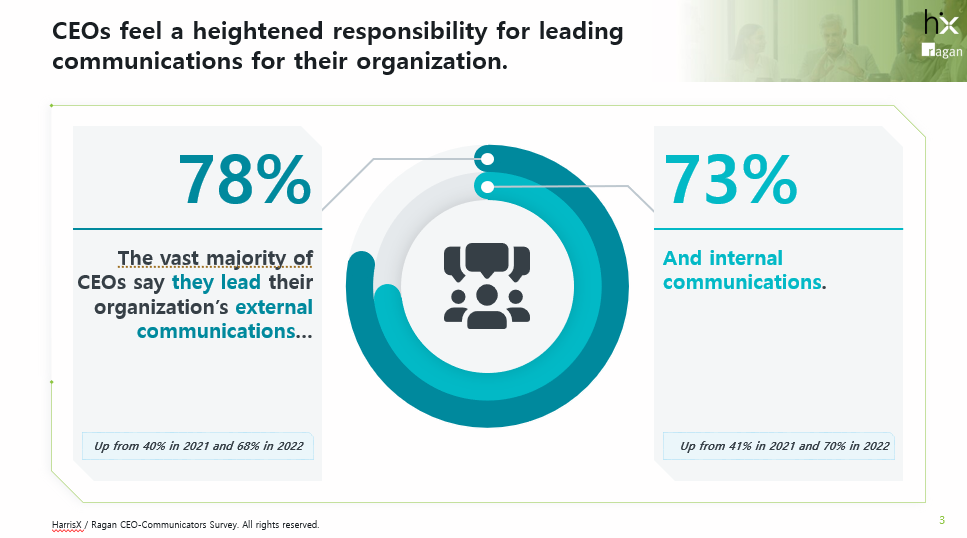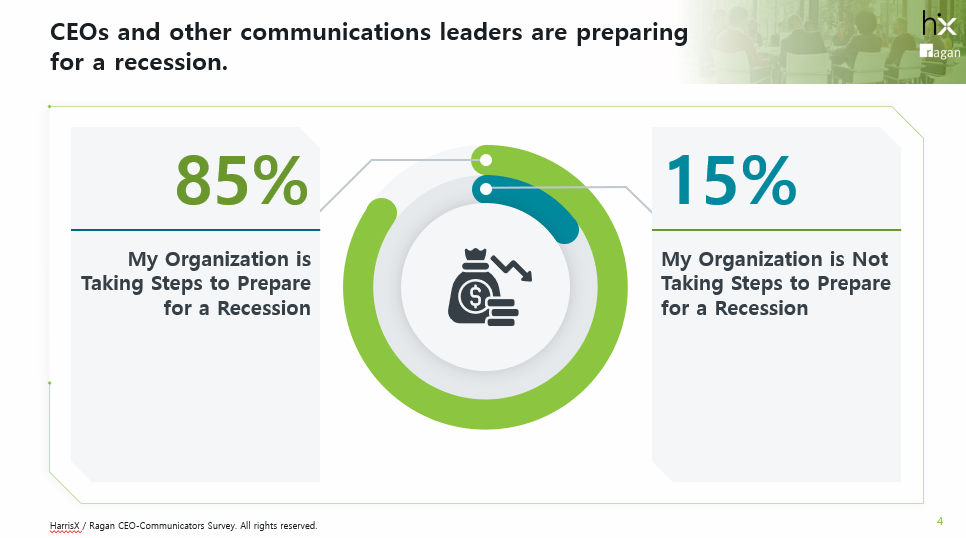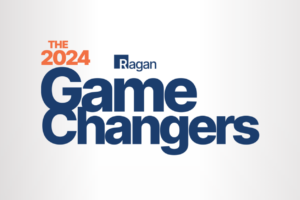Research: How CEOs influence the comms function
Findings of the 2023 HarrisX/Ragan Survey of Communications Leaders reveal how CEOs influence comms, how comms leaders feel about the growing influence of AI and more.

After another whirlwind year of global crises, advancing AI and continued workforce upheaval, the communications function remains at an inflection point. How communications leaders work with the C-suite, and communicate the value of comms, remains of critical importance.
Ragan Communications partnered with research consultancy HarrisX to understand how CEOs and communications leaders view each other’s roles and responsibilities, what they value most, and how they feel about the growing influence of AI.
The survey was conducted by Ragan and HarrisX from August 11 – September 11 and surveyed 370 CEOs and high-ranking communications professionals.
Here are three things that stuck out.
1. As stakes rise, CEOs feel a heightened responsibility to lead communications for their organization.
CEOs increasingly see themselves as responsible for both external and internal communications, with this sense of responsibility nearly doubling since 2021.

Unprecedented events have compelled CEOs to take the lead in their organization’s communications, resulting in a disconnect between comms leaders who consider themselves autonomous in the function and CEOs who see comms as their responsibility.
Be aware that this can swing too far in the wrong direction and leave comms out of the decision-making process. This was the case with many communications professionals in the Ragan community who thought they’d earned that seat at the table were sometimes left out of the room when statements about Israel/Hamas were drafted.
2. CEOs and other communications leaders are preparing for a recession.
Despite elevated pressure on brands from external audiences and employees alike, a looming recession has organizations bracing for change.

Nearly all CEOs and other communications leaders say their organization is preparing for a recession, and as they do so, trying to minimize the impact on staff, focusing on cost-cutting measures, particularly in travel and operations. Despite this, layoffs have occurred for roughly a quarter of these leaders’ organizations. Most leaders from medium and large organizations are back in the office, though they say that they endorse a hybrid work policy for employees.
Comms can help prepare teams across the org and build cross-functional relationships by codifying their value. This can happen by unpacking the org-chart cross-functionally, creating efficiency through advocacy of new tools and commtech (think AI, project management software) and taking an early-adopter approach to communicating how these tools help teams do more with less, putting flexibility at the forefront.
3. Communications leaders are ready to embrace artificial intelligence.
CEOs and communications leaders are keenly focused on and optimistic about AI.

Three in five believe AI will have a significant impact on their organization in the coming years, and even more see it as a tool to enhance how they perform in their own role.
Download the full study results here.






